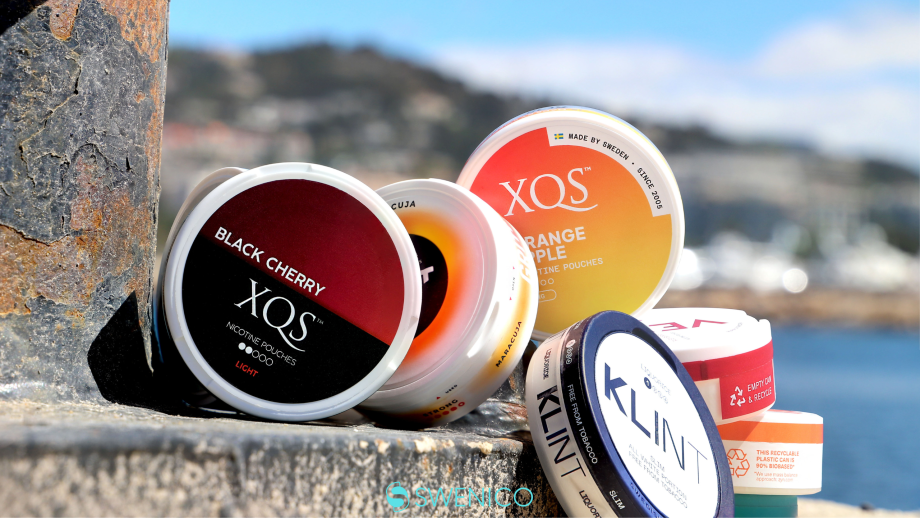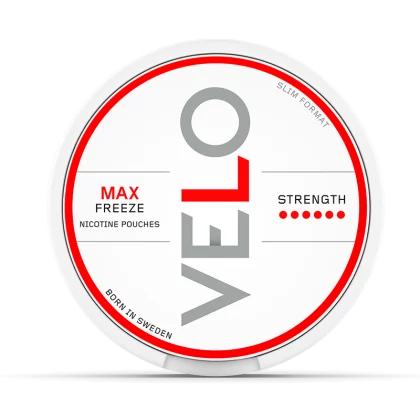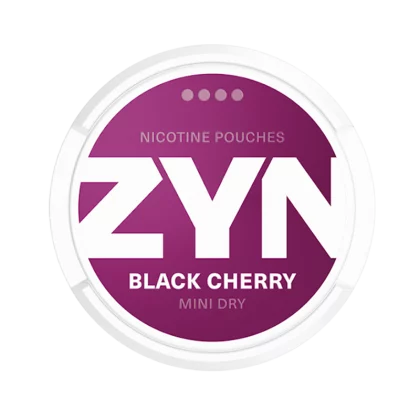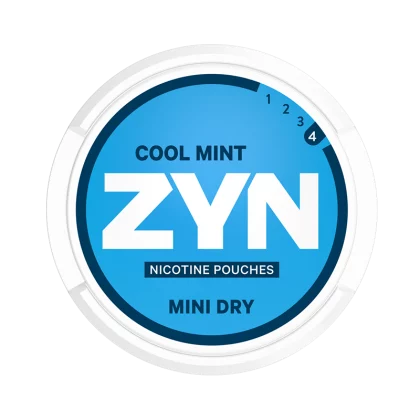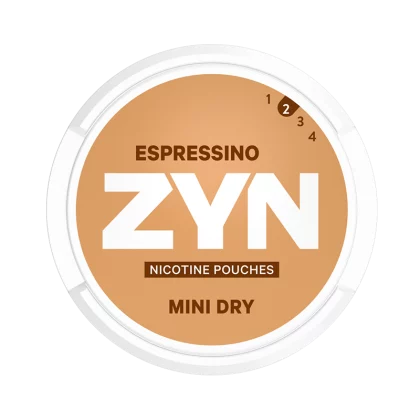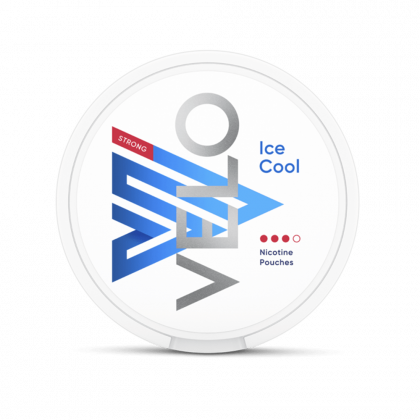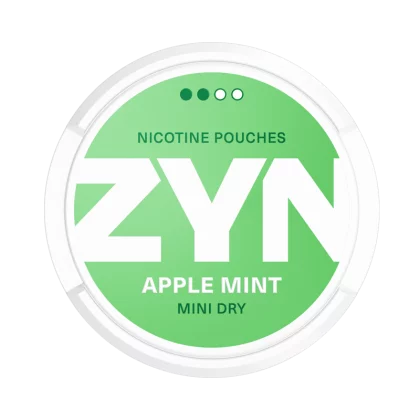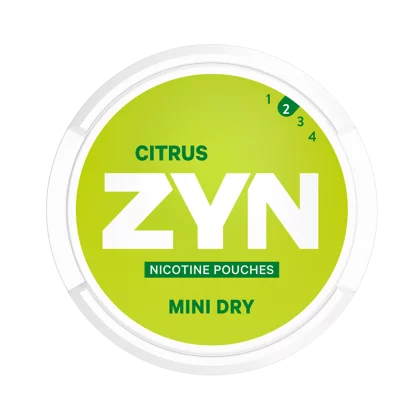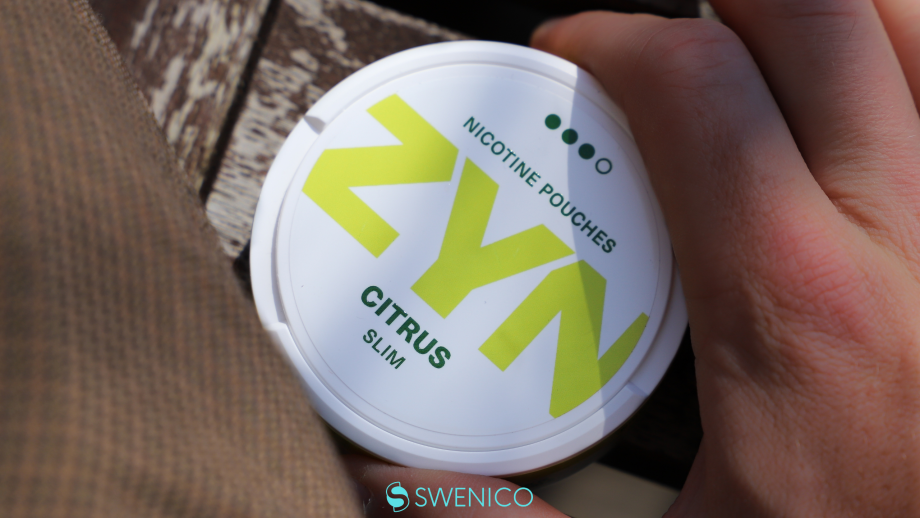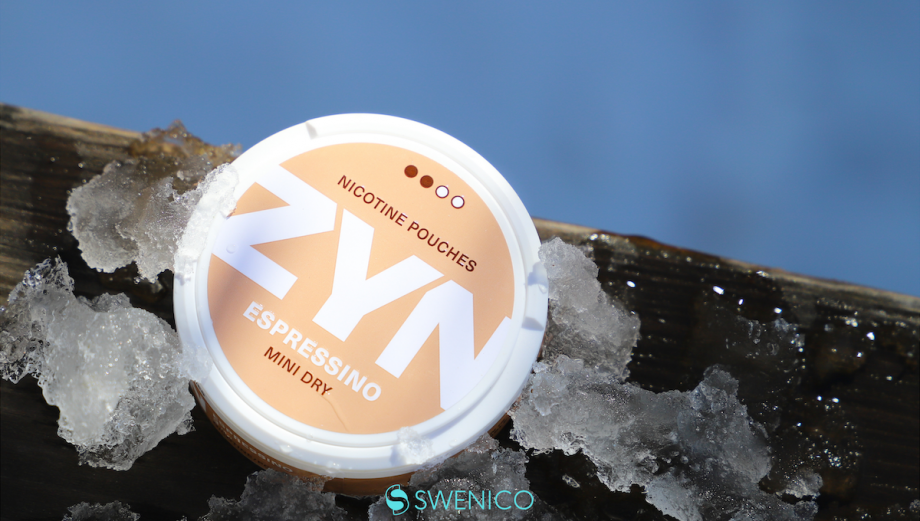Nicotine pouches are a relatively new product on the market, only arriving in the last couple of years. At the same time, nicotine pouches are essentially just a product development of the traditional tobacco Swedish snus which has existed for centuries and has a long history in Scandinavia. In essence, nicotine pouches are snus but without the tobacco which has been replaced with plant fibers.
Naturally, the most important ingredient in nicotine pouches is nicotine. It is for the nicotine pouches that these pouches are used and for the effects that it brings during use. But with this said, this naturally begs the question: what type of nicotine do nicotine pouches use?
Perhaps you have read about synthetic nicotine, tobacco-derived nicotine and nicotine salt but what do these actually mean? Which type of nicotine is used in nicotine pouches and what are the differences between the different types?
All of this is exactly what we are going to clarify and sort out in this article.
About nicotine pouches and nicotine
Nicotine pouches are used for their nicotine. When a pouch is placed under the upper lip, the nicotine is absorbed through the mucous membranes. The nicotine can have different effects but it generally causes a feeling of satisfaction and enjoyment and can give a kick.

In recent years, innovations in the nicotine pouch industry have led to the emergence of two distinct sources of nicotine: synthetic and tobacco-derived. As consumers become more discerning about the products they use, understanding the differences between these two sources is crucial for both users and manufacturers alike.
The fact of the matter is that different manufacturers of nicotine pouches may use different types of nicotine so it can be good to understand the different types of nicotine and their respective properties.
Background on Nicotine
Nicotine is a naturally occurring alkaloid found primarily in the tobacco plant, Nicotiana tabacum. Nicotine is a stimulant that affects the central nervous system, leading to feelings of alertness and relaxation. When consumed, nicotine can lead to both psychological and physical dependence, which contributes to its widespread use in various tobacco products.
Tobacco has a long history of use, dating back thousands of years. Indigenous peoples in the Americas originally used tobacco for medicinal and ceremonial purposes before it was introduced to Europe in the 16th century. Over the centuries, tobacco-derived nicotine has been consumed in various forms, such as cigarettes, cigars, pipes, snuff, and more recently, e-cigarettes and nicotine pouches.
Development of Synthetic Nicotine
Synthetic nicotine, also known as non-tobacco-derived nicotine (NTDN), is a laboratory-produced alternative to traditional tobacco-derived nicotine. The development of synthetic nicotine began in the 20th century but it has gained significant attention in recent years due to the increasing demand for tobacco-free nicotine products. Synthetic nicotine is chemically identical to its tobacco-derived counterpart, but it is produced without the use of tobacco plants.
Synthetic Nicotine
Synthetic nicotine is produced through a series of chemical reactions in a laboratory setting. The process typically starts with a base compound, such as niacin (vitamin B3) or nicotinonitrile, which is then subjected to various chemical transformations to synthesize nicotine. Advanced techniques, such as chiral catalysis, are employed to ensure the production of high-purity nicotine that is chemically identical to its naturally occurring counterpart.
publichealthlawcenter.org states that ”Although most nicotine products on the market use tobacco or tobacco-derived nicotine to create and facilitate addiction, within the last few years synthetic nicotine products have gained new attention and notoriety.”
According to publichealthlawcenter.org, the production cost of synthetic nicotine, which was historically less bioavailable than tobacco-derived nicotine, has significantly decreased. Industry insiders have reported that the price for manufacturing synthetic nicotine has fallen from being ten times more expensive to only three to four times the cost of producing tobacco-derived nicotine. This shift in costs has its roots in the tobacco industry’s research dating back to the 1960s, which initially deemed the production of bioavailable synthetic nicotine as significantly more costly than deriving nicotine directly from tobacco.
Recent regulatory actions have also encouraged the use of synthetic nicotine, particularly in e-cigarettes. In 2019, the U.S. Food and Drug Administration (FDA) implemented a limited restriction on the sale of flavored cartridge-based e-cigarette pods, leading to a surge in sales of disposable e-cigarettes available in a variety of appealing flavors for young consumers. PuffBar, a notorious brand, briefly withdrew its products from the market following an FDA warning in 2020 regarding a lack of proper premarket authorization. However, the brand soon returned, claiming that its products now contained synthetic nicotine.
The FDA’s regulatory actions inadvertently incentivized the use of synthetic nicotine, as the agency exercised its premarket review authority without simultaneously regulating synthetic nicotine. Under the Family Smoking Prevention and Tobacco Control Act, the FDA’s Center for Tobacco Products (CTP) had jurisdiction over nicotine-containing products made or derived from tobacco. However, this did not extend to products containing synthetic nicotine, leaving the CTP without the authority to regulate or remove such products from the market.
This regulatory loophole has allowed companies to bypass restrictions by switching to synthetic nicotine. For instance, e-cigarette manufacturer Breeze Smoke, which received a Marketing Denial Order (MDO) from the FDA, ceased selling its denied products in the United States. Following a brief legal battle, the company resurfaced, announcing that it no longer used tobacco-derived nicotine.
Advantages
- Purity and Consistency: Synthetic nicotine offers greater purity and consistency compared to tobacco-derived nicotine. Since it is produced in a controlled environment, the risk of contamination and variations in nicotine concentration is significantly reduced, leading to a more consistent product.
- No Tobacco-Specific Impurities: As synthetic nicotine is not derived from tobacco, it does not contain tobacco-specific impurities, such as tobacco-specific nitrosamines (TSNAs), which are known to be harmful. This makes synthetic nicotine potentially safer than its tobacco-derived counterpart.
- Reduced Environmental Impact: The production of synthetic nicotine does not involve the cultivation, processing, or disposal of tobacco plants, which can have a substantial environmental impact. This allows for a more sustainable and eco-friendly alternative to tobacco-derived nicotine.
Disadvantages
- Cost of Production: The manufacturing process for synthetic nicotine is more complex and resource-intensive than that of tobacco-derived nicotine. As a result, synthetic nicotine is typically more expensive to produce, which may impact the cost of nicotine pouches containing synthetic nicotine.
- Limited Research on Long-Term Effects: While synthetic nicotine has been shown to be chemically identical to tobacco-derived nicotine, there is limited research on the long-term effects of using synthetic nicotine products. More studies are needed to fully understand its potential health implications and confirm its safety profile.
Tobacco-Derived Nicotine
Tobacco-derived nicotine is extracted from the leaves of the tobacco plant through a series of processes, including curing, fermentation, and chemical extraction. The most common extraction methods include steam distillation, solvent extraction, and supercritical fluid extraction. These methods aim to isolate nicotine from the tobacco leaves while minimizing the presence of impurities and unwanted compounds.
Advantages
- Established and Time-Tested Source: Tobacco-derived nicotine has been used for centuries in various forms of tobacco products. Its long history of use provides a wealth of knowledge and experience in its production and consumption, which can be advantageous for manufacturers and consumers alike.
- Lower Production Costs: The extraction of nicotine from tobacco leaves is generally less expensive than the complex synthesis of synthetic nicotine. The lower production costs can make tobacco-derived nicotine pouches more affordable for consumers and more cost-effective for manufacturers.
Disadvantages
- Presence of Tobacco-Specific Impurities: Tobacco-derived nicotine may contain traces of tobacco-specific impurities, such as tobacco-specific nitrosamines (TSNAs), which have been linked to adverse health effects. Although modern extraction methods have significantly reduced the presence of these impurities, their complete elimination is challenging.
- Environmental Impact of Tobacco Cultivation: The cultivation and processing of tobacco plants can have negative environmental consequences.
Comparison of nicotine absorption and user experience
Now that we understand tobacco-derived nicotine and synthetic, let’s compare them side-by-side to understand their similarities and differences.
Absorption Rate
The rate at which nicotine is absorbed into the bloodstream is a critical factor in the user experience and properties of nicotine pouches determining the user’s experience. Both synthetic and tobacco-derived nicotine have similar molecular structures, leading to comparable absorption rates when consumed through nicotine pouches. The primary factors that influence absorption include the concentration of nicotine, the formulation of the pouch, and the individual user’s biology.
Onset of Effects
The onset of effects, or the time it takes for the user to feel the impact of nicotine is another important aspect of the user experience. Studies suggest that synthetic and tobacco-derived nicotine exhibit similar onset times, providing users with a consistent experience regardless of the source. Worth pointing out is that the type of nicotine used is not the only factor affecting how rapidly the nicotine is absorbed. This primarily has to do with other factors such as the moistness of the pouches, the pH-level, flavor, and how much saliva your mouth produces.
Duration of Effects
The duration of effects, or the length of time that the user experiences the nicotine’s impact, is crucial in determining the satisfaction and overall user experience of a nicotine pouch. Both synthetic and tobacco-derived nicotine are metabolized similarly in the body, leading to comparable durations of effect. With that said, there is no real difference between synthetic and tobacco-derived nicotine in this regard and the duration of effect also comes down to other factors such as nicotine strength and ingredients.
Overall Satisfaction
The overall satisfaction of nicotine pouch users depends on a combination of factors, including the absorption rate, onset and duration of effects, and the flavor and texture of the pouch. As both synthetic and tobacco-derived nicotine provide similar pharmacological experiences, user satisfaction is often influenced by personal preferences and individual experiences rather than the type of nicotine used. In some cases, users may prefer the taste or perceived “cleanliness” of synthetic nicotine, while others may be more comfortable with the familiarity of tobacco-derived nicotine. Ultimately, the choice between synthetic and tobacco-derived nicotine pouches is a matter of personal preference, with both sources offering comparable user experiences.

Nicotine Salts in Nicotine Pouches
Now that we have understood synthetic nicotine and tobacco-derived nicotine, it’s time to look closer at a particular type of nicotine which is nicotine salt. And it’s important to point out that nicotine salt is just a form of tobacco-derived nicotine which is extracted in a specific way, not a completely different type of nicotine.
Nicotine salts are a modified form of nicotine created by combining freebase nicotine with an organic acid, such as benzoic or lactic acid. This combination results in a more stable compound with a lower pH level, offering improved absorption, a smoother experience, and a longer shelf life compared to freebase nicotine. Nicotine salt is the most popular option for nicotine amongst manufacturers due to the fact that it properties go very well together with the way nicotine pouches are intended to be used. The properties of nicotine salt has just the right properties that are desirable for an oral nicotine product like nicotine pouches.
Benefits of Nicotine Salts in Pouches
- Enhanced Absorption: Due to their higher bioavailability, nicotine salts are more efficiently absorbed by the body, allowing users to experience the effects of nicotine quicker and potentially at lower concentrations.
- Smoother Sensation: The lower pH level of nicotine salts results in a smoother throat hit, making them more comfortable for users, particularly in higher nicotine concentrations. This smoothness is desirable in nicotine pouches, as it contributes to a more pleasant user experience. A nicotine that is too ”rough” would cause discomfort in the throat which is not ideal for nicotine pouches.
- Extended Shelf Life: Nicotine salts are more stable than freebase nicotine, meaning they are less susceptible to oxidation and degradation over time. This stability is advantageous for nicotine pouches, as it ensures the product maintains its quality and potency throughout its shelf life.
Popularity of Nicotine Salts in Pouch Brands
Most nicotine pouch brands today choose to use nicotine salts in their products due to the advantages they offer over traditional freebase nicotine as well as over synthetic nicotine. The enhanced absorption, smoother sensation, and extended shelf life of nicotine salts make them an appealing choice for both manufacturers and consumers. By incorporating nicotine salts into their formulations, nicotine pouch brands can provide a satisfying and enjoyable experience for users seeking a tobacco-free alternative.
Do nicotine pouches use synthetic nicotine?
Some nicotine pouches on the market use synthetic nicotine however it is relatively uncommon. Today, there are only a few brands that use synthetic nicotine in nicotine pouches. It remains to be seen whether or not more manufacturers will opt for synthetic nicotine in the future but thus far, it seems that manufacturers are the most happy with nicotine salt and thus have no reason to change to anything else at this time.
At the same time, synthetic nicotine could become more common of legislators start regulating tobacco-derived nicotine different from synthetic nicotine and if there would come regularity challenges for tobacco-derived nicotine produces that synthetic nicotine products do not have.
Moreover, synthetic nicotine could become a more attractive option for those who want a product that in no way is derived from the tobacco plant.
The choice between synthetic and tobacco-derived nicotine pouches is primarily a matter of personal preference. However, since the market is overwhelmingly dominated by nicotine salt which is a tobacco-derived nicotine, it is relatively difficult to find synthetic-nicotine alternatives.
As awareness of synthetic nicotine increases and more products become available, the demand for synthetic nicotine pouches may grow and if this proves to be the case, manufacturers will likely listen to the market and begin launching more nicotine pouches with synthetic nicotine.
Popular brands and the type of nicotine used
ZYN
Zyn uses nicotine salt (Nicotine bitartrate dihydrate) which is a nicotine salt found naturally in tobacco leaves.
Velo
Velo uses a patented nicotine salt.
ON!
ON! Uses nicotine salt.
Conclusion
The vast majority of nicotine pouches on the market today use tobacco-derived nicotine in their products. Because they do not contain any tobacco leaves, nicotine pouches can be called ”tobacco-free”, even though the nicotine they use is derived from tobacco. Still, in many countries, nicotine pouches are classified as tobacco products due to the fact that it is a novel product that there is no specific regulation that covers these smokeless products.
Popular nicotine pouches
-
ZYN Cool Mint Mini Dry Normal 3mgPrice is hidden
-
VELO Freeze MAXPrice is hidden
-
ZYN Mini Black Cherry 6 mgPrice is hidden
-
ZYN Cool Mint Mini Dry Extra StrongPrice is hidden
-
ZYN Espressino Mini Dry Normal 3mgPrice is hidden
-
Zafari Desert Mint 4mgPrice is hidden
-
VELO Ice Cool Mint Strong SlimPrice is hidden
-
ZYN Apple Mint Mini Dry 3mgPrice is hidden
-
ZYN Citrus Mini Dry Normal 3mgPrice is hidden

